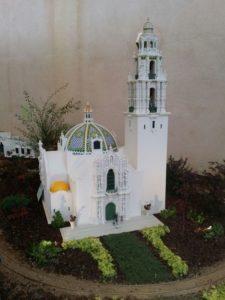Model railroading has always had a reputation for being a hobby for old men, but i’m not really sure that’s exactly true. I certainly don’t have any statistics to back it up other than my own experiences, but I think that as with any modelling hobby the range of ages of hobbyists is going to be far more varied than most people realize. Years ago I used to work at a hobby store that sold model railroad parts and supplies, and while there were certainly more older men who enjoyed it, for the most part hobbyists tended to come in all ages. There were even several women who built model railroads, granted they weren’t as common, but there were enough to dispel the notion that it was something only old men enjoyed.
My grandfather had a rather extensive model railroad set up in his garage for most of my childhood. He had built the railroad to weave itself through his garage, around things like the water heater, his work bench and a storage area, with several large areas with model buildings, hills and trees and even an industrial area. As an adult I can look back and admit that his setup, while great, was probably rather tame compared to some of the incredible model railroads that I’ve seen since. But as a child I used to spend hours watching his trains make their way through his elaborate set up, mesmerized by the complexity and detail.
Curiously, and contradictory to the theory that only old men enjoyed model railroads, my grandfather started the hobby when he was relatively young, and actually gave it up as he got older. By the time I was around to see what he had built in his garage he had long stopped adding to it and only really fired it up at my request. Most of his modelling was done as a much younger man, and almost all of the buildings and bridges were built from scratch. When I asked him why he stopped he said that he had less time to devote to the hobby, and it had become too time consuming to continue to add on to his miniature town. While my grandfather passed away more than a decade ago I still remember the sadness that he seemed to feel over no longer having the time to spend on his hobby, and I wonder what he would have made of 3D printing technology.
As many fans of model railroads note the decline in the popularity of their hobby, some of them wonder if 3D printing technology can actually help save it. As with most modelling hobbies like role playing games or tabletop battle games, 3D printers offer a tremendous amount of freedom to hobbyists. Recently the San Diego Model Railroad Museum (SDMRM) brought in a 3D designer and 3D printing enthusiast Clayton McIntyre to help them create a new installation using 3D printed buildings. The new exhibit is the Centennial Railway Garden, and it includes scale models of several historic buildings from Balboa Park, quite a few of them that are no longer standing. The installation was so successful that Museum Director Anthony Ridenhour got funding to purchase a 3D printer and to launch a series 3D printing classes. The SDMRM ended up bringing McIntyre back to teach the 3D design and 3D printing classes with a focus on model railroads.
The class started with students learning the basics of CAD software using a cloud-based program Onshape. The robust software platform was built by a group of former Solidworks team members, and the program shares a lot of the ease of use and flexibility, making it an ideal training program for people new to CAD. McIntyre also walks students through the use of professional 3D printing software Simplify3D, and helps them 3D print their first models. According to McIntyre, one of his students ended up going out and purchasing his own 3D printer to use after the class has ended.
The goal of the class is to show existing model railroad enthusiasts how they can use 3D printing to design and 3D print their own scale models, but it is also an attempt to draw younger, more tech savvy people into the hobby. The beauty of 3D printing is the ability to scale up as your skill level increases. New users can start small, focusing on things like road signs, benches, small details and natural formations and work their way up to full buildings and even detailed railroad car models themselves. The only limits of using a 3D printer to build scale models are really just the size of the print envelope and the skill of the user. Some of the models that McIntyre’s students created during the class were barrels, shipping crates and water towers.
McIntyre’s first round of classes took place back in April, and based on their success the SDMRM expects new classes to begin shortly. Originally the classes were restricted to adults, but the museum is planning on expanding the classes to include younger students interested in learning how to 3D model and 3D print. You can check out some of McIntyre’s 3D printing projects on his personal website, and you can learn more about the San Diego Model Railroad Museum and find out when new classes start on their website. Discuss further in the San Diego Model Railroad Museum & 3D Printing forum over at 3DPB.com.
Here is some video of the Centennial Railway Garden and some of its many 3D printed buildings:
